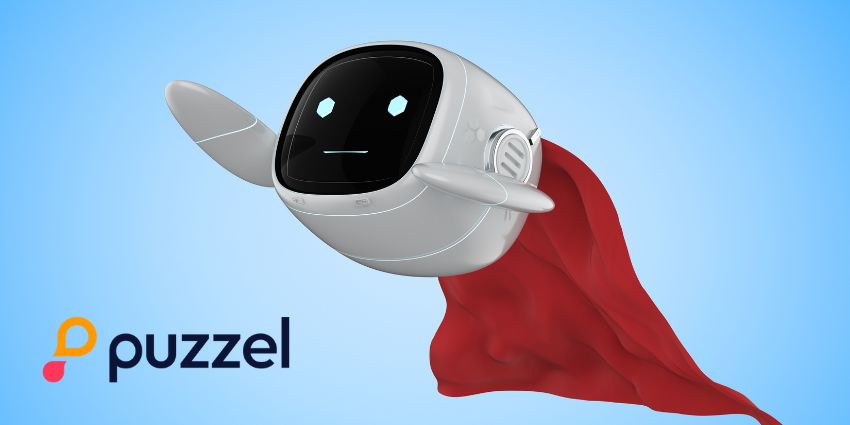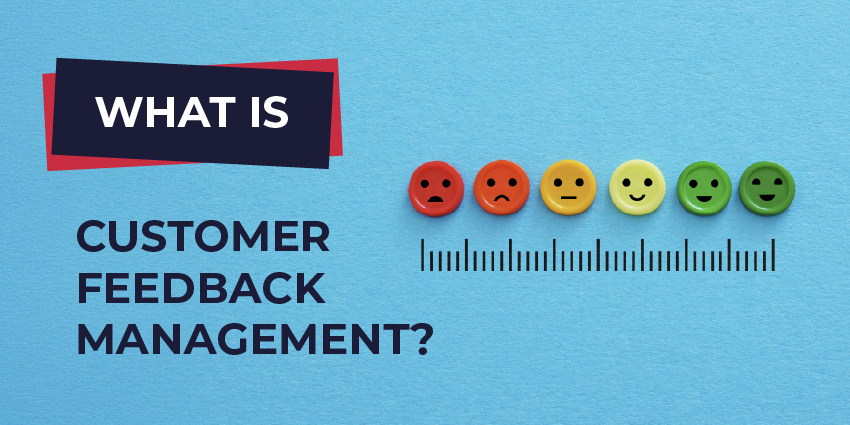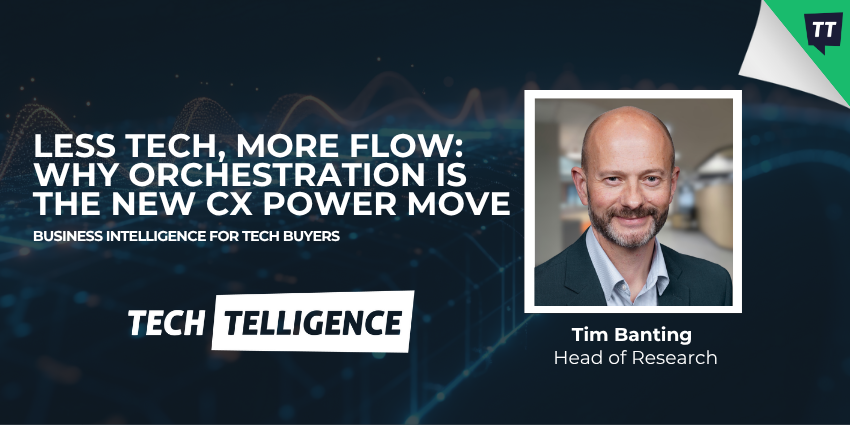Conversational AI solutions are advancing rapidly across the customer experience space and beyond. We’re not just dealing with chatbots anymore.
Today’s systems are truly intelligent, capable of understanding intent and sentiment, routing requests intuitively, and resolving complex queries.
Multimodal systems can interpret and share rich media, adapt in real-time to consumer needs, and scale across various channels. Many conversational AI models even allow developers to give the agent a personality!
Yet, as the industry advances, some businesses are much further ahead of the innovation curve than others.
The vendors below are leading the way, not only in their solution’s functionality but in their vision, too. They also feature in CX Today’s Conversational AI Marketplace for their ability to help businesses address real issues in customer service.
The Top Conversational AI Solutions
The Leading Conversational AI Solutions Vendors
Not all conversational AI vendors are built the same. Some go deep on voice automation. Others lean into chatbot design or workflow integration. A few aim to do it all, combining AI-powered routing, agent assist, and customer-facing bots in one tightly integrated platform.
What matters most is how these tools perform under pressure. Can they handle regulatory compliance? Do they integrate with existing systems? Can they manage complex, high-volume conversations without needing constant re-training?
The vendors listed below aren’t ranked. Each brings something different to the table, and they all deliver real value to CX-focused teams.
Aisera
Like many of the vendors on this conversational AI solutions list, Aisera is expanding into agentic AI, delivering AI agents that reason, adapt, and automate enterprise tasks.
Solving customer problems is one such task, and Aisera enables this through its Dynamic Action Agents. These allow service leaders to describe the query they want to solve in natural language. From there, Aisera identifies which APIs it needs to call and then orchestrates a path for the Action Agents to follow as they interact with customers.
Aisera also offers a “hyperflow” of out-of-the-box automations that leaders can deploy “with just a few clicks”.
Additionally, Aisera provides AI agents for proactive customer service, code generation, advanced analytics, and more.
Key differentiators for Aisera include its domain-specific large language models (LLMs) and adjacent expertise in IT Service Management (ITSM).
Avaamo
Like Aisera, Avaamo has fully embraced the agentic AI movement. In March 2025, it launched Workforce Agents, capable of reasoning and pivoting when completing human-like tasks.
However, there are several intriguing aspects to Avaamo’s approach. For starters, it started with automating healthcare as a vertical instead of tackling a specific domain, like sales or service.
Avaamo wanted to tackle the “most complex industry” first. In doing so, it created a suite of specialized agents that – in many cases – work together to solve specific tasks within enterprise flows.
Meanwhile, the vendor bundles proprietary AI with that of large language model (LLM) providers – like OpenAI – to maximize the performance of agents and deliver an off-the-shelf solution customized for enterprise environments.
In terms of its conversational AI for CX, Avaamo remains a popular option for contact centers, delivering agents that can handle the unpredictable nature of real conversations, including interruptions, clarifications, and mid-task adjustments, just like live reps.
AWS
AWS is one of the most flexible conversational AI solutions vendors. Businesses can build and deploy Amazon Lex via the AWS Cloud. Most often, service teams leverage Lex as a solution embedded within Amazon Connect, AWS’s cloud contact center.
After all, perhaps its most notable feature is to ingest contact center transcripts, isolate common contact reasons, and understand how to solve them. It then auto-generates virtual agent designs to handle these intents and accelerate conversational AI design.
Alongside this, AWS provides vertical-specific bot templates tailored for finance, retail, and several other sectors. These include full bot flows and are quickly deployable via AWS CloudFormation.
Lex also aligns with additional AWS products – like Lambda (for logic execution) and Kendra (for search), for greater customization. It also includes messaging integrations with Messenger, Slack, Twilio, and other platforms.
boost.ai
boost.ai is a firm favorite among midmarket companies , thanks largely to its drive to offer enterprise-grade worthy solutions at a more affordable rate. “Your ROI is our success metric,” the vendor claims.
The rapid development of its analytics toolkit allows brands to track that ROI more easily.
In November 2024, it launched actionable metrics to monitor and categorize the outcome of every conversation, offering insight into why conversations were automated or escalated.
Additionally, it introduced a review feature to monitor the intent, broader context, and relevance of responses alongside new visualization tools.
Another innovative feature is boost.ai’s Test Studio. It validates and optimizes agents’ performance – while testing prototypes based on defined success criteria.
Cognigy
Cognigy has proven adept at anticipating key market shifts – including the rise of agentic and generative AI – and innovating ahead of the curve.
Like many of the top conversational AI solutions vendors, it’s now all-in on AI agents, which have benefited from the vendor’s longstanding expertise in developing flexible dialog designs.
In 2025, it’s already delivering practical enterprise applications of Model Context Protocol (MCP), which provides a standard for AI agents to discover software and even take actions within systems.
Yet, while it’s at the forefront of innovation, Cognigy has established a reputation for its customer experience, reflected in its excellent performance across verified review sites like G2 and Gartner Peer Insights.
Elsewhere, it has formed tight bonds with enterprise contact center vendors, like Avaya, Genesys, and NICE, which assisted its rapid global growth.
Google Dialogflow CX remains a popular conversational AI solution for contact centers and is evolving with Vertex AI on the back end, bolstering its capabilities.
The Vertex AI builder allows Google to build powerful agents through natural language. Yet, it also empowers businesses to blend generative and deterministic flows, enabling a modular approach to autonomous conversational AI adoption.
Other key features of Dialogflow CX include its support for real-time video input, emotional awareness capability, and support for “human-like” voices.
Google is also now packaging Dialogflow Conversational Agents as part of its Customer Engagement Suite, an extensive contact center offering.
Notably, it’s fascinating how Google is leading consumer applications of conversational AI. As such, it may support customers and contact centers as their “machines” interact autonomously.
Gridspace
Gridspace offers two central voice AI applications: a transcription & conversational analytics product primed for contact centers alongside a conversational AI platform.
It differentiates via a primary focus on specific use cases that drive value, targeting cost reduction and/or tangible customer experience outcomes.
Supporting this endeavor is an LA-based team comprising talent from Standford, MIT, and various other institutions – which share fascinating demos and similar content on YouTube.
Its virtual agent, Grace, also helps CX teams design their own agents to get closer to the design process and ensure it works for customers, not just IT.
Moreover, via Grace, Gridspace promises to help businesses build proof-of-concept solutions in hours, which would ordinarily take hours.
IBM
IBM has led the conversational AI market since the launch of IBM Watson back in 2004. Gartner and Forrester’s latest market reports still present IBM as a market front-runner, thanks to its watsonx Assistant.
Its extensive base of researchers and partners – including MIT – have supported the development of its thousands of conversational AI, natural language processing (NLP), and speech patents, many of which support the watsonx Assistant.
More recently, it has developed many original LLMs for targeted specific business use cases.
As such, IBM takes a thorough approach to building use cases that blend many forms of AI and various models to optimize performance, specifically across HR, sales, and service.
Lastly, IBM targets a broader range of industries than most, offering intelligent models across often underserved markets like the public sector and telecommunications.
Kore.ai
In recent months, Kore.ai has released three agentic AI platforms. These cover customer service, employee productivity, and business productivity.
Yet, across these platforms, it provides an orchestrator to control agents, adjust their level of autonomy, and manage their memory. This enables an end-to-end agentic AI offering.
That offering has remained Kore.ai’s priority in 2025. But its core conversational AI solutions are robust. For instance, it doesn’t just base its responses on intent data. Instead, it has a Knowledge Graph to provide more intelligent, detailed query responses.
Like Cognigy, Kore.ai has also established a strong reputation for customer support and fruitful partnerships with large contact center vendors.
It also looks beyond CCaaS, with a fully agnostic platform for greater deployment flexibility and an increased capacity for integration.
LivePerson
While it may not have the name of AWS, Google, or IBM, LivePerson has a deep conversational AI solutions clientele, including HSBC, Sky, and Zurich.
That customer base is representative of its vertical focus, with a considerable presence across the communications, education, and financial services markets.
It has also established close partnerships with legacy contact center vendors, like Avaya, which typically work with predominantly larger enterprises. That has bolstered its market presence.
LivePerson also offers helpful educational resources around conversational AI, such as its conversational maturity assessment, to help prospects and existing customers continually advance their propositions.
Microsoft
Microsoft’s AI Bot Service is its conventional conversational AI offering. However, in 2024, it integrated the Microsoft Copilot Studio.
Copilot Studio allows businesses to build, customize, and deploy autonomous AI agents.
Earlier this year, Microsoft added a feature allowing AI agents to autonomously interact with software and websites like humans. In this sense, it’s similar to OpenAI’s Operator.
As a result, agents may click buttons, type into search fields, and select menus autonomously. Over time, that could help transform conversational AI and automation.
However, the Azure Bot Service remains Microsoft’s core solution, offering a free trial and pay-as-you-go pricing. This signals a differentiator in lowering costs that Microsoft, like its fellow hyperscalers like AWS and Google, can deliver to customers.
NTT Data
NTT Data aims to distinguish itself with a more consultative approach to conversational AI solutions.
In doing so, the company has vertical experts who work closely with customers across the design and deployment experience while offering additional services.
These services leverage its broader portfolio, which includes cybersecurity, digital workplace, and edge technologies, to bolster implementation and connect cross-enterprise projects.
Another adjacent tech is 5G networks. While that may aid the mobility of various conversational AI offerings, it could also support mission-critical use cases – such as emergency virtual assistants.
While NTT has a reasonable presence across Africa, America, and Europe, it is most prevalent across Asia and the Pacific, where it is a prominent conversational AI solutions vendor.
OneReach.ai
OneReach.ai is another firm that hasn’t strayed from the edge of conversational AI innovation, as it became one of the first industry players to embrace AI agents.
Yet, it doesn’t just focus on their design, testing, and deployment; it also offers an orchestrator to support enterprise-wide deployments of the technology.
Additionally, OneReach.ai offers a composable architecture with a bring-your-own model (BYOM) approach that allows brands to test use cases against the best available model to optimize the performance of AI models.
That architecture is also cognitive. As such, AI agents identify the tools and integrations they need to access so they can complete the requested task.
Therefore, OneReach.ai not only saves time with its approach but also helps compose the processes behind use cases so brands can start to experiment with more complex applications of conversational AI.
Parloa
Like OneReach.ai, Parloa has built an AI platform studio with stress on creating tools that help teams orchestrate back-end workflows and improve outputs.
It also places significant emphasis on compliance, security, and trust. Indeed, it ties a deep security offering with its Voice AI Studio for comprehensive oversight and quality assurance (QA).
As such, it is often a popular option for enterprises worried about bringing accompanying security operations fully in-house.
For a smaller vendor, the company has an impressive partnership model, with close CCaaS collaborators and many others in the broader CX market.
Microsoft is a notable close partner, with former executives at the tech giant joining last year as business leaders at Parloa. They recently paraded the vendor out on the Microsoft AI Tour 2025.
SoundHound
SoundHound acquired Amelia in August 2024 and now offers the Amelia Platform that marries conversational and agentic AI solutions.
Amelia had a robust legacy presence in enterprise AI, littered with multinational contracts – including 15 of the “top” global banks.
Yet, SoundHound – now with Amelia – won’t service these customers by relying on APIs from external providers like Google, as many of its competitors do. For the company, that limits how far it can push its vision.
Because SoundHound owns its tech, it can continually rework and optimize its offerings without relying on third-party providers to push its innovation and vision forward.
Finally, the company also onboards Amelia’s deep partner base and technical team, including its expansive research and development (R&D) center in Bangalore, India.
Sprinklr
Sprinklr proved ahead of the agentic AI curve with its “digital twin” announcement early last year – launching AI doubles of employees, including marketing, sales, and service reps.
Still, that’s an innovative concept, with Sprinklr considering how to personalize AI use cases to individual employees so they perform the AI agent performs tasks as they would. That’s an original take on the hybrid workforce!
Alongside this, Sprinklr’s Conversational AI Platform promises to help “build bots in minutes” via a three-step, no-code process that leverages natural language prompts alone.
Notably, Sprinklr is the only CCaaS vendor to feature in the Gartner Magic Quadrant and Forrester Wave for conversational AI. As such, it has the potential for systems consolidation.
Rory Read, who took over as CEO in November 2024, will likely have this goal in mind, given his heritage in the contact center space as the former Vonage head honcho. Yet, Sprinklr can also deploy use cases across its feedback, marketing, and social media suites.
Tars
Tars typically performs well across verified review platforms – like G2 and Gartner Peer Insights – with customers citing high engagement throughout the development process.
The company typically supports customer service and marketing teams and aims to differentiate via ease-of-use alongside customer experience.
While its Tars platform made the vendor a popular option for conversational AI solutions, it has recently placed more emphasis on agentic AI, creating an AI agent marketplace.
The marketplace contains agents that aim to augment the performance of employees across the organization with online templates that businesses can play with. There are also consumer agents, even those that support gamers to improve their performance.
Uniphore
Uniphore primarily targets contact centers with a purpose-built conversational AI stack.
It has also moved into adjacent areas – such as customer data platforms, virtual assistance applications, and workforce engagement management (WEM) tooling.
Notably, it also supports customers through broader contact center migration journeys, ingraining its conversational AI and automation capabilities across their environments.
As such, the vendor can provide a more comprehensive platform than many competitors, enabling customers to take an AI-first approach to contact center transformations.
Verint
Verint describes its Da Vinci platform as a conversational AI solution turned “bot factory”, where businesses can build AI use cases – utilizing various AI models – that overlay their existing technology infrastructure.
Alongside Da Vinci, Verint offers its Engagement Data Hub, which acts as a “bot gym”, training bots on interaction, experience, and workforce data.
Verint is typically deployed in contact centers, which often utilize much more of its portfolio. This industry expertise installs confidence in its customer service deployments.
Ultimately, Verint aims to provide a bot for “every” contact center workflow, connecting conversational AI agents to the broader service stack and processes.
Yellow.ai
Yellow.ai has achieved rapid growth in recent years, adding the likes of Pepsi, Sony, and Volkswagen to its portfolio – alongside numerous prominent global organizations in the automotive sector.
One differentiative feature is in its in-house LLMs, designed for conversation automation, analytics, and orchestration.
Another is in its expansive ecosystem, which features custom integrations to many helpdesk apps, like Freshdesk, HubSpot, and Zendesk.
Finally, Yellow.ai prides itself – like many competitors – on its voice AI, claiming to support “human-like” conversations across 135 languages.
The Best Conversational AI Solutions for Enterprises
Most people still think of conversational AI as customer service’s shiny new toy, a way to make bots sound friendlier, or reduce headcount on the front line. And sure, there’s still plenty of that happening. But anyone leading CX at enterprise scale knows the conversation has moved on.
Today’s best platforms aren’t just answering questions. They’re routing issues, flagging intent, running compliance workflows, and surfacing insights from thousands of live interactions.
One vendor might be a better fit for teams managing high volumes of voice traffic across regulated industries. Another might serve internal helpdesks better, or scale faster across multiple geographies. Some are doubling down on agentic AI . Others are keeping their guardrails tight and focused on reliability.
So, here’s the next step.
- Track the latest moves: Explore new research and CX market data for deeper insights into the future of artificial intelligence.
- Join the discussion: Connect with fellow CX leaders, IT strategists, and automation pros in the dynamic CX community.
- See what’s coming next: Get a front-row seat at the upcoming CX events shaping next-gen customer experience.
- Make smarter buying decisions: Explore the CX buyer’s guide for a step-by-step map through each stage of enterprise CX procurement.
The tools are evolving, but the pressure is too. If there’s one thing enterprise leaders can count on, it’s that the conversations ahead, with customers, employees, and vendors, won’t be simple. That’s exactly why the right AI partner matters.







